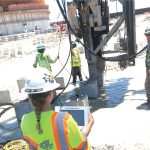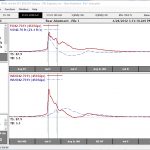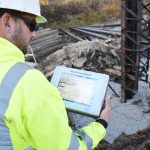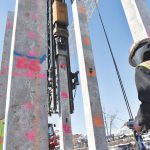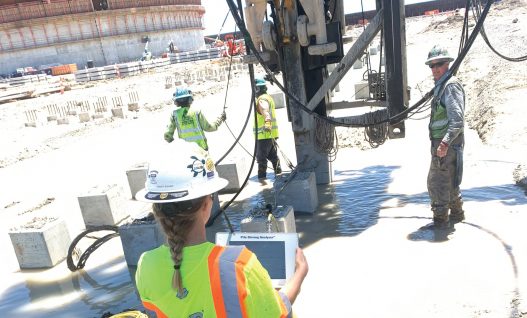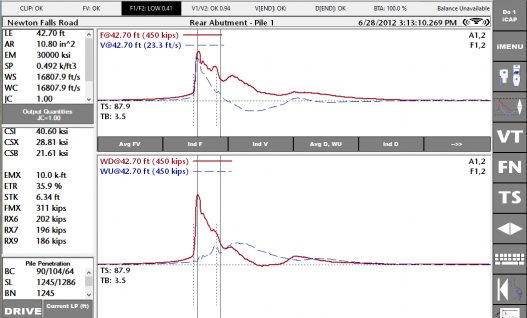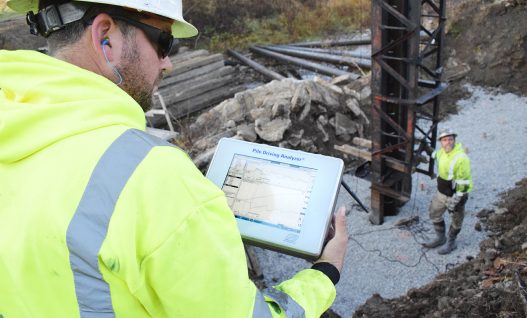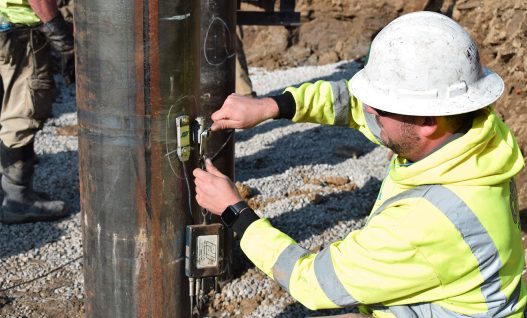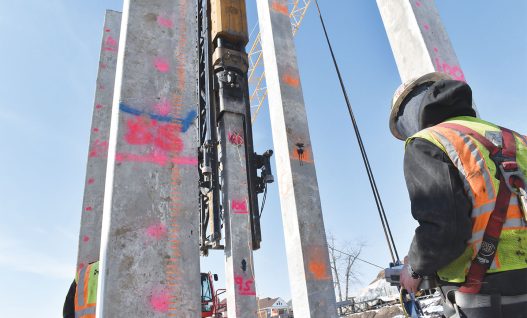Dynamic Pile Monitoring (PDA)
Cost Effective Pile Driving Monitoring
Piles need to be efficiently installed for their required capacity without exceeding their specified pile material stresses. In some cases, a penetration depth must also be achieved. Dynamic pile monitoring offers an economical way to facilitate pile installation to satisfy these objectives.
Dynamic monitoring requires attaching strain transducers and accelerometers to the pile. During impact driving, these measurements are converted to force and velocity records that are processed by a Pile Driving Analyzer or “PDA”. The acquired dynamic monitoring data can be used to estimate bearing capacity during driving with Case Method or iCAP®, or after data collection with CAPWAP® analysis. Compression and tension stress levels monitored during driving are compared to driving stress limits and allow field adjustment to the pile installation procedures if necessary. The dynamic monitoring results also provide information on soil resistance at the time of monitoring as well as on driving system performance. Since Pile Driving Monitoring occurs in real time, it can be performed with minimal delay to the foundation construction. GRL can perform Pile Driving Monitoring by having an engineer at the job site or remotely from the GRL office, using SiteLink®. Dynamic measurements can also be made during installation of vibratory hammer installed piles and sheets to assess installation issues and stresses.
When dynamic pile monitoring is implemented as part of a test program, it can assist in developing the pile installation criteria. When used during production pile driving, it can check that the pile installation is in accordance with the established criterion and specification requirements.
Dynamic Pile Monitoring is based on the Case Method of pile testing and is standardized by ASTM D4945 Standard Test Method for High-Strain Dynamic Testing of Piles.

